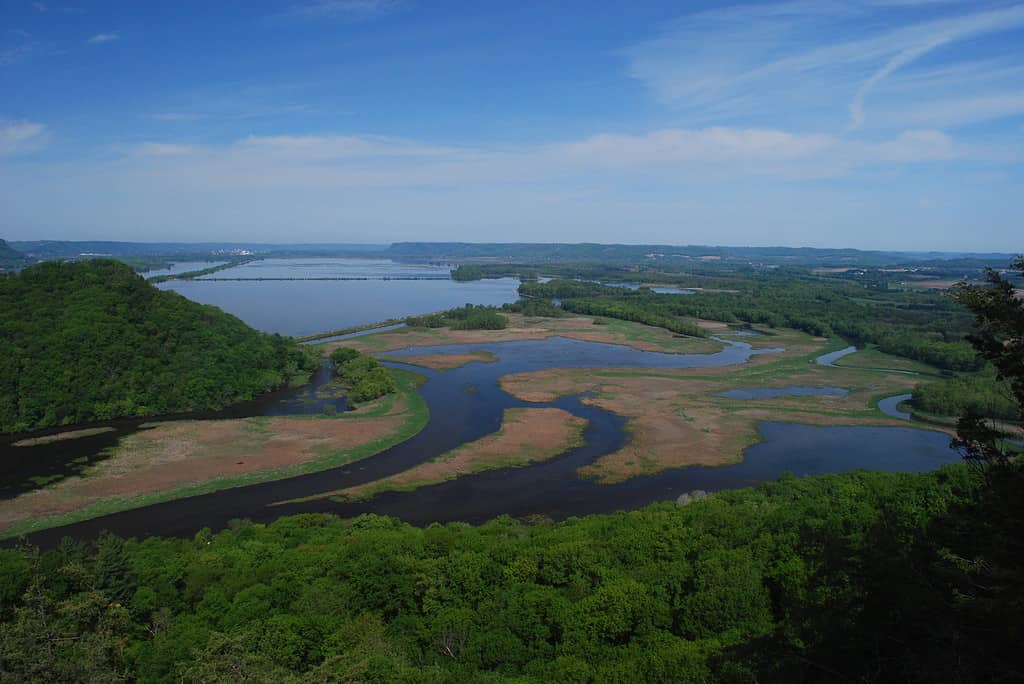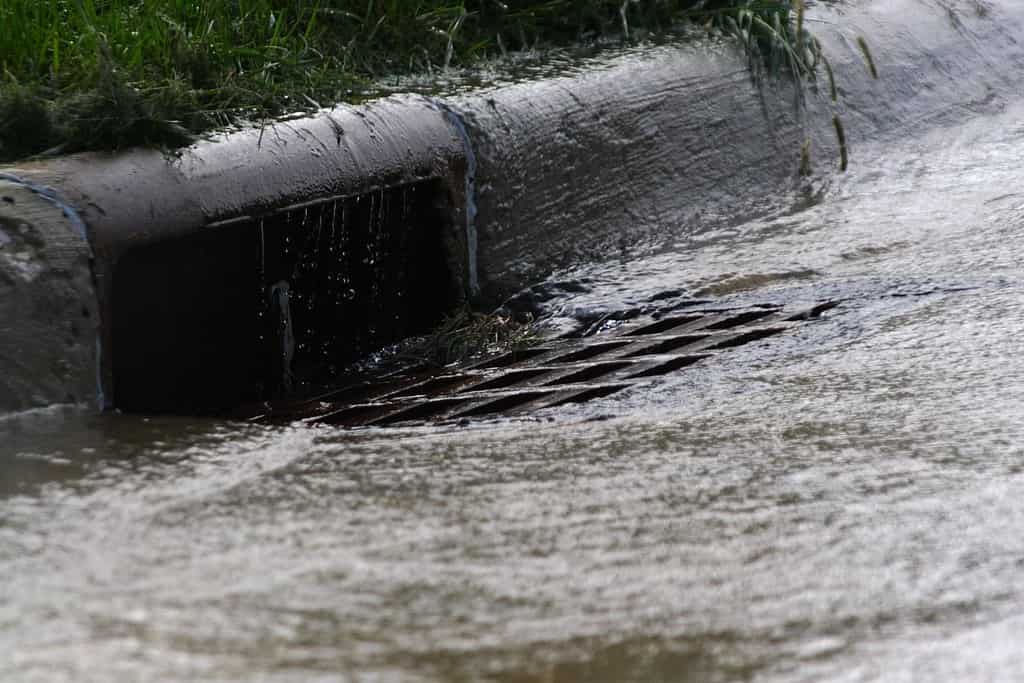The Mississippi River is one of the most important rivers in all of America. When something is impacting the Mississippi, the reverberations can be felt all around the country. Recently, certain waterway droughts around the globe have been causing widespread issues (most notably, the Panama Canal), and the Mississippi may be heading for a similar fate. Let’s take a look at what the data is saying and if the Mississippi is facing any dire straits around the bend.
The Mississippi Could Be Facing a Severe Drought

Currently, the Mississippi River is on track to repeat the same drought as last year, potentially causing problems.
©Joshua Mayer / CC BY-SA 2.0 – License
The Mississippi River is what one might call an “artery” of the United States. It’s a hub for waterborne commerce and allows pretty much everything, food, agriculture, coal, petroleum, and almost anything else, along its 2,320-mile course. As important as it is, however, the river is also vulnerable to the effects of climate change and seasonal problems. These extreme weather events can ultimately reduce rain along its watershed.
The real crux of the issue? The Mississippi River is showing signs of repeating the drought events of 2022, which ultimately reduces capacity and could cause transportation concerns felt all over the world.
“It was hopeful that 2023 would not present a sequel to the historically low water levels on the Mississippi River in 2022, but unfortunately that clearly is occurring. Harvest and the concomitant export season is “game time” for farmers and the entire agricultural industry. During this period, we need our supply chain, including the Mississippi River, to be operating a full capacity. The current low water conditions are therefore clearly a cause for concern.”
Marine Log
Barging Our Way Through

Transportation via barge is the most common and efficient method of travel along the Mississippi.
©Steve Gadomski/Shutterstock.com
The impact of the low water levels on the Mississippi has serious implications for the shipping industry and, subsequently, the economy. Here’s how it works. Most things that are sent down the Mississippi is transported by barge. A barge is an extremely large, flat boat that can’t maneuver all that well, but is extremely buoyant. These barges get loaded up with products, which right now is mostly soy, corn, and other harvest, and then transport it cheaply over the water.
Right now, the lower river levels mean that the barges aren’t able to be fully loaded with material; otherwise, they might scrape the bottom of the riverbed. As a result, barge operators have to reduce the amount of cargo they can carry and the number of barges they can connect together, increasing the cost of transportation and reducing the efficiency of the supply chain. According to the Soy Transportation Coalition, barge rates originating in St. Louis and Cairo-Memphis regions were 42% and 81% higher, respectively, than the same period last year. These costs are often passed onto farmers, unfortunately.
To make matters worse, the current situation is almost exactly what happened during the historic Mississippi River drought that occurred last year in 2022. Last year, the river reached an extremely low point. The U.S. Army Corps of Engineers had to dredge and blast rocks to keep the navigation channel open and prevent a potential shutdown of the river traffic.
Dry Ground Complicates Things

Dry soil in the region will suck up any water before it hits the Mississippi.
©Robert Lawton, CC BY-SA 2.5 , via Wikimedia Commons – License
So, is a good rainstorm all we need? Unfortunately, no.
The soil moisture in the river basin has a lot to do with how much water actually reaches the river when it does rain. Soil moisture is the amount of water stored in the soil, which depends on factors such as precipitation (rain), but also evaporation, and a few other elements.
When the soil is dry, it acts like a sponge and soaks up most of the rainfall that occurs. This reduces the amount of water that flows into the river. Dry soil then increases the demand for irrigation water from farmers, who rely on the river for their crops. This further depletes the river’s flow and lowers its level. It’s like a terrible cycle of dry soil, watering it, and then lowering the river levels more. According to a study by researchers at NASA and the University of Nebraska-Lincoln, soil moisture in the Mississippi River basin declined by 2.4% per year from 2003 to 2019.
To restore the Mississippi River to its normal level, it would require not just a single rain event, but a sustained period of above-average precipitation that would saturate the soil and generate more runoff.
Again, the bad news is that there isn’t something like that on the horizon, at least not yet. Unless there is a significant change in the weather pattern, the Mississippi River could remain in a state of drought for a long time.
Conclusion
The Mississippi River is facing a serious threat from the ongoing drought that has reduced its water level and flow. The river is a lifeline for the U.S. economy, especially for the agricultural sector, which depends on the river for irrigation and transportation. However, the drought has increased the cost and difficulty of shipping goods along the river, and has also affected the quality and quantity of crops. The impact of the drought on agriculture will likely be felt not only this year but also in the future, as the prices of commodities may rise due to lower supply and higher demand.
The outlook for the Mississippi River is still uncertain, as the weather conditions in the region are not favorable for significant rainfall. Even if it does rain, the dry soil will absorb most of the water, leaving little for the river. We can only hope that things change and a wet season soon sweeps over the region.
The photo featured at the top of this post is © Justin Wilkens/Shutterstock.com
Thank you for reading! Have some feedback for us? Contact the AZ Animals editorial team.






